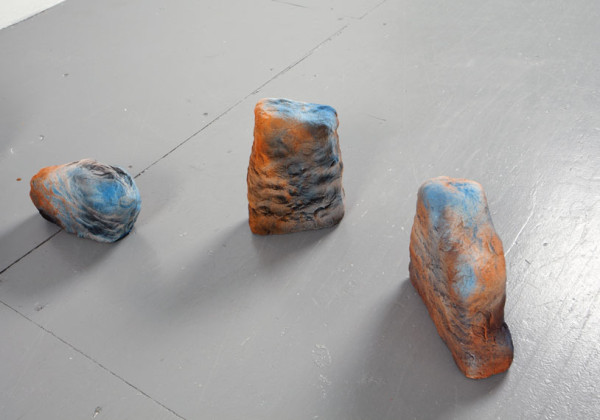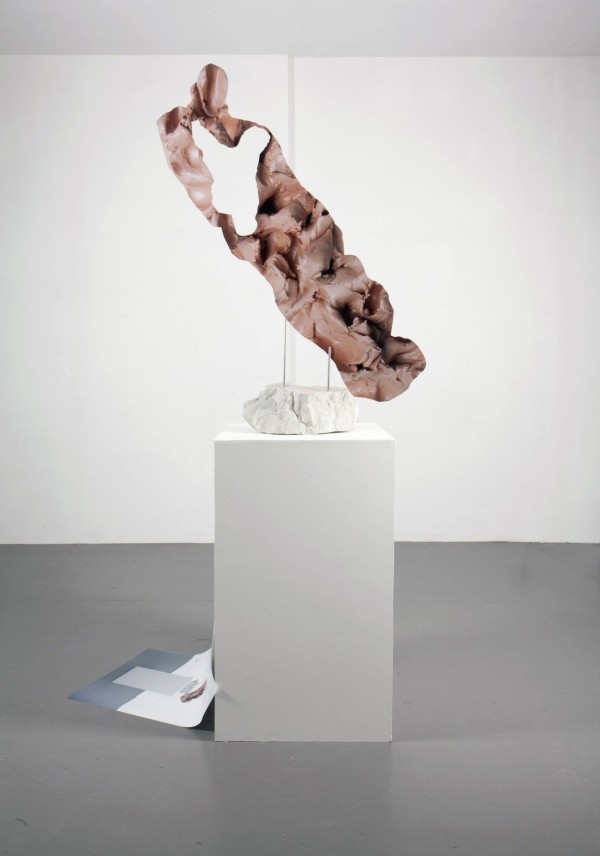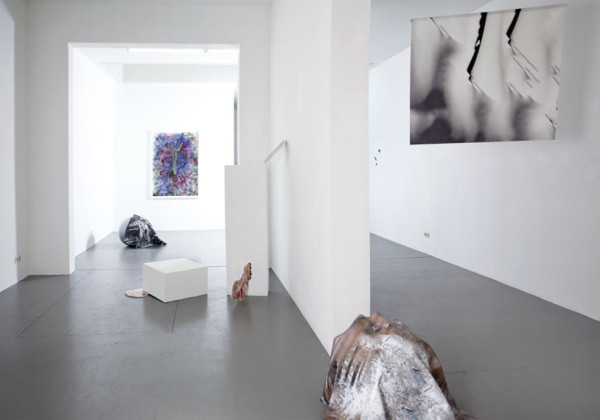Surface Poetry
Saturday, 1 February 2014
Surface Poetry at Boetzelaer|Nispen.
“Today, the digital screen has become the predominant surface for engaging with visual content. The texture of the digital screen, characterized by its flat surface, artificial smoothness, juxtaposition of different windows, and chromatic backlit glow, constitutes the aesthetic framework in which we perceive and act upon a large part of the images we digest daily. Getting accustomed to its visual and haptic settings, we expect other surfaces and visual stimuli to appear and respond in a similar fashion. We have never been able to demand as much from a surface as we do in the age of digital screens. Having turned into intimate objects, screens have never been more responsive, more aligned with our needs, more flexible and addicting. Yet, at the same time, these beautiful things remain strangely alien, remote and detached in their closed-off technological perfection.
If digital surfaces are so ubiquitous, if we embrace them in such a powerful way, we need to question how they actually influence our visual culture. What are the aesthetic norms and affordances of the screens that we look at and touch continuously? How do they shape our perceptual and tactile conventions – also in situations that are not directly related to digital devices? This exhibition traces the impact of digital surfaces in the selected works of 3 artists – Katharina Fengler (1980, Germany), Ida Lehtonen (1986, Finland) and Rachel de Joode (1979, The Netherlands).
In Katharina Fengler’s paintings flatness dominates. On her large airbrushed works on paper fore- and background merge, while high and low contrast meet. Her paintings have an absolute presence, no before and after. The eye doesn’t know where to focus, how to zoom in or out, where to look first. Her paintings conjure the atemporality of the screen, the juxtaposition of disparate entities on one equalizing plane. This obstruction of perspective, in combination with a mesmerizing presence, also translates to her sculptural work. As if they fell from the paintings, these objects occupy space like alien things. Upon closer inspection, they reveal distinctly human marks, such as handprints, which complicate their smooth, Photoshop-like appeal.
Ida Lehtonen’s canvases display digital prints. In her collages, images are layered, merged and folded into each other, displaying frictions and traces that are entirely software-generated. Abstract landscapes with an almost painterly quality emerge. As if the screen had collapsed, these landscapes present us with a mush of patterns and glitches, laying bare textures that otherwise remain hidden by the smooth functionality of our interfaces. Placed in the exhibition space, it looks as if the contents of our computer screens, tablets and smartphones have spilled out and morphed onto hanging structures and objects.
Rachel de Joode’s sculptures often play with expectations connected to specific materials and surfaces. In her work, digital images are given a material presence in the physical space of the gallery, which they nevertheless have to share with other objects. In the case of “Reclining Wet Clay On Greek Marble,” a high-definition photograph of wet clay is mounted on top of a marble stone as a sculptural element, generating a sense of dissonance that addresses our habituated perception of each medium. For “Folded Skins,” De Joode pasted together images of her skin to create a group of photographic sculptures. These sculptures are informed by the smooth and homogenizing effects of digital image-processing software, while simultaneously highlighting the uneven and porous textures of the human skin. The photo collage is printed on round, bean-shaped cut-outs, which are somewhat oddly grouped together. This further complicates their presence as objects constituted on the bleeding edges of the slick and the granular, the artificial and the organic, surface and depth, the screen and the gallery space.” – Boetzelaer|Nispen


